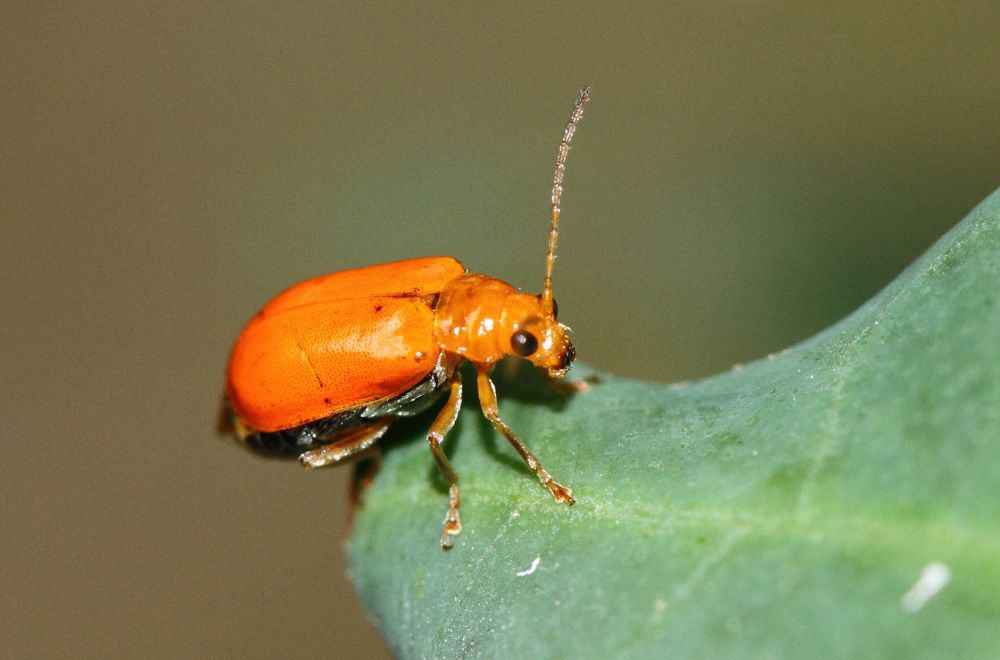Spotting bugs in your bed is a pretty nasty experience, and after your initial revulsion, you are likely to want to know what they are – and more importantly, how to get rid of them.
The most obvious suspect is bed bugs, but there are also a few other possibilities – so to help you understand what the bugs might be and how to deal with them, in this post, we tell you everything you need to know about tiny red bugs in your bed.
What are Tiny Red bed bugs?
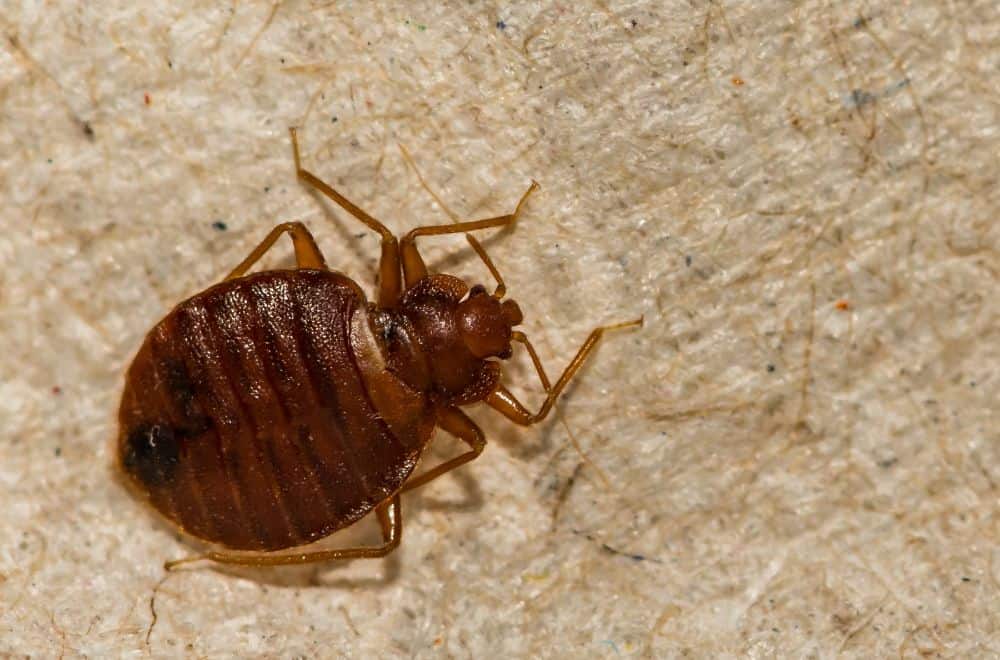
If you spot tiny red bugs in or around your bed, the first thing you’re likely to think is “bed bugs”.
Even if you don’t know what a bed bug looks like, you’re sure to know the name. And you might also be aware that a bed bug infestation is particularly difficult to resolve, so seeing red bugs in your bed might send you into a mild panic.
But what are they exactly?
“Bed bugs” is the common name we give to blood-sucking insects from the genus Cimex.
More specifically, it usually refers to two closely related species, Cimex lectularius, the common bed bug, and Cimex hemipterus, the tropical bed bug.
Both bugs specialize in feeding on humans and like to make their homes in and around mattresses, behind headboards and in any other cracks and crevices they can find.
They then come out at night to feed on our blood, which is how they get their name.
Bed bugs infest new areas by hitching a lift on luggage or in clothes when we stay somewhere that’s infected – people commonly pick them up when staying in hotels or hostels.
When you arrive home, they then crawl out of your clothes and luggage to hide out and wait for nighttime when they emerge again to feed. Once bed bugs are present, they multiply rapidly, and once they’re there, they’re very difficult to get rid of.
Do I have Tiny Red bed bugs?
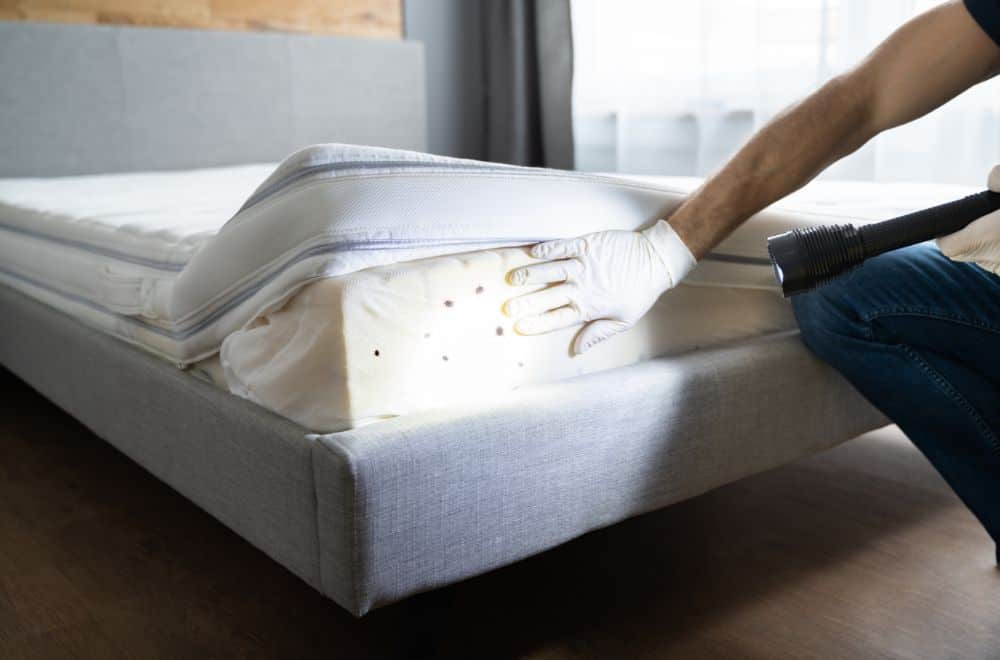
So how do you know if you have bed bugs?
If you don’t see the bugs themselves, the first thing you might notice is the red marks they leave on your skin after they bite you. They look like tiny red dots and don’t usually hurt but can be extremely itchy.
Since bed bugs come out at night to feed, that’s when you’re most likely to see them.
The adults are about a quarter of an inch long, and before feeding, they have flat, red-brown bodies with six legs, two antennae and tiny eyes that stick out slightly from either side of their heads.
However, after they have eaten, their bodies swell, and they become a much brighter red due to the blood they have consumed.
Bed bugs go through several nymph phases before they reach the full adult stage. Bed bug nymphs look like smaller versions of the adults.
They feed on human blood at all stages of development, and they like to stick together. So if you spot one, you will probably also see others, and they are likely to be all different sizes – although, in the early stage of an infestation, you may only see one or two.
So in short, if you have red bite marks and you spot multiple flat-bodied, red-brown insects in or around your bed, especially at night, it’s likely you have bed bugs.
What else could these bugs be?
If you spot red bugs in your bed, before you start taking measures to exterminate a bed bug infestation, you need to be sure you’re dealing with bed bugs because several other species can resemble bed bugs to the untrained eye – so let’s look at these now.
1. Bat bugs

Bat bugs are close relatives of bed bugs, but instead of feeding on humans, they feed on bats.
In fact, it is believed that the ancestors of bed bugs fed on bats before developing a taste for human blood.
Bat bugs look almost identical in size and shape to bed bugs, and the only thing that gives them away is a slightly darker color. However, to non-specialists, this can be hard to spot, especially without a bed bug to compare the bat bug with.
Perhaps the best way to work out that you are seeing a bat bug and not a bed bug is that you don’t have any bite marks from their nightly feeding.
You will probably also only see one bat bug instead of lots. Bat bugs don’t feed on humans, so they are unlikely to be living and breeding around your bed. More likely, the bat bug got there by accident and would rather be somewhere else feeding on the blood of a bat.
If you think you’ve found a bat bug, the best thing is just to kill it – and then keep an eye out for more in case it was a bed bug.
2. Ticks

Ticks can look a little like bed bugs, and if you see one in your bed, you might assume it’s a bed bug.
However, the giveaway is that, as arachnids, ticks have eight legs instead of six. The legs are also spread out much more compared to bed bugs – bed bugs keep their legs closer to their bodies. Ticks also have tiny heads compared to their bodies, so their shape is quite different.
Ticks are usually picked up by pets or people walking in long grass. Once they find a host, they bite into the skin and gorge themselves on blood, swelling up into a large bulbous form.
If you see one in your bed, it may be big and round, which probably means it’s already fed on you. Alternatively, it might be flat, like a bed bug.
In any case, you should just remove it from your bed and kill it since ticks can carry dangerous diseases that can be transmitted if they bite you.
They don’t infest homes, so if you find one, you don’t need to worry about finding more – although it doesn’t hurt to check your bed thoroughly, just in case.
3. Clover mites
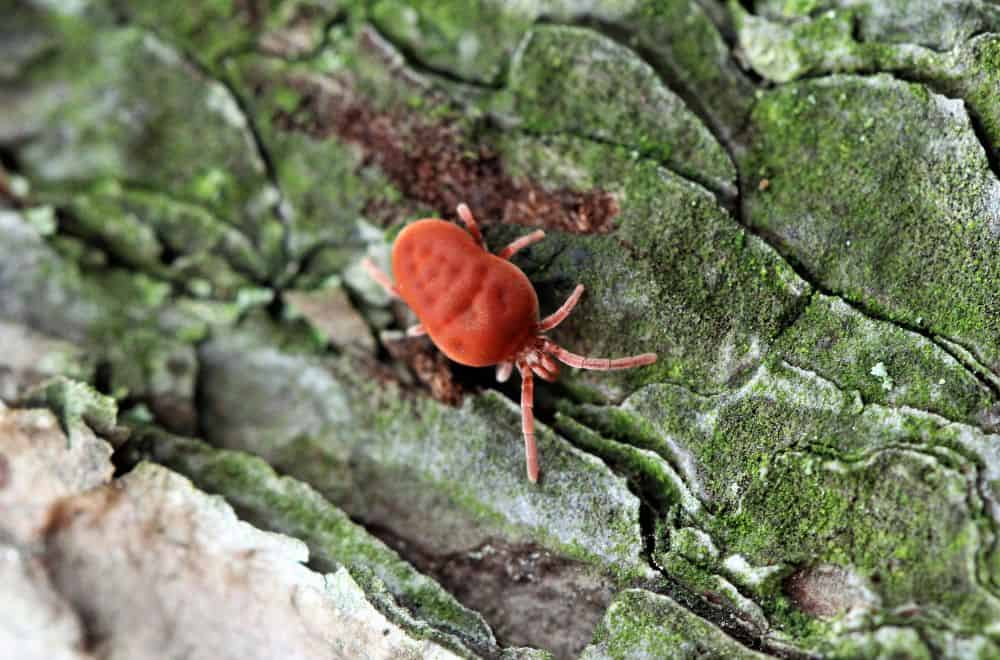
Clover mites are tiny red arachnids that are often seen in spring. They are far smaller than bed bugs, so it’s hard to get the two confused.
Furthermore, they’re normally seen around doors or windows, so if one is in your bed, it’s probably an accident and nothing to worry about. These mites are harmless to humans.
If you see a clover mite in your bed, don’t squish it – because it will stain your bed linen.
4. Spider beetles
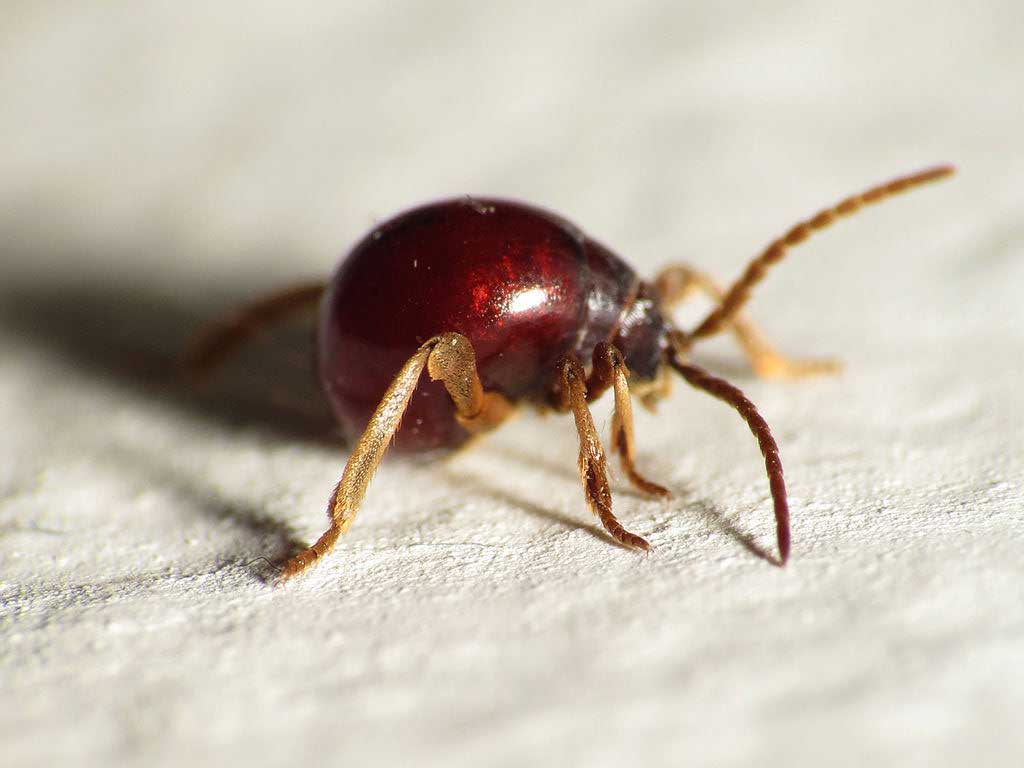
Image Credit: rottler
Spider beetles are smaller than bed bugs and have much longer legs, resembling a spider, hence the name.
They also look a bit like ticks, but as insects, they have six legs and not eight.
These bugs are scavengers that feed on whatever they can find – but they don’t bite humans, so if you see one, there’s nothing to worry about.
5. Baby cockroaches
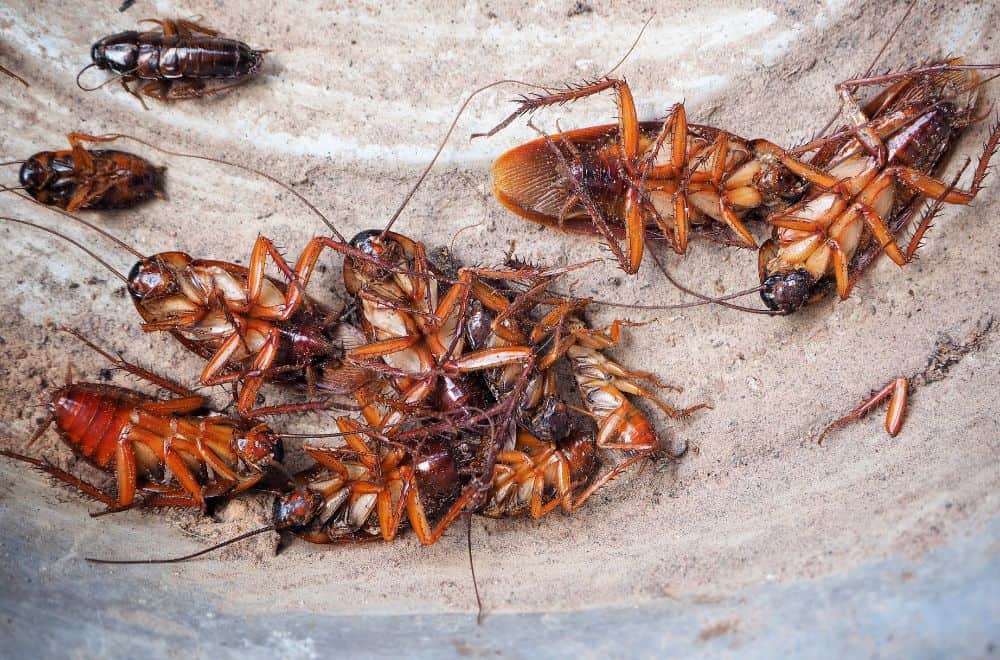
Everyone knows what cockroaches look like, but the smaller nymphs can look superficially like bed bugs due to their size and color. However, they have longer bodies than bed bugs, and their antennae are also longer.
If you see a baby cockroach in your bed, you don’t need to worry about being bitten – but you do need to worry about a roach infestation, which is another problem entirely.
6. Carpet beetles
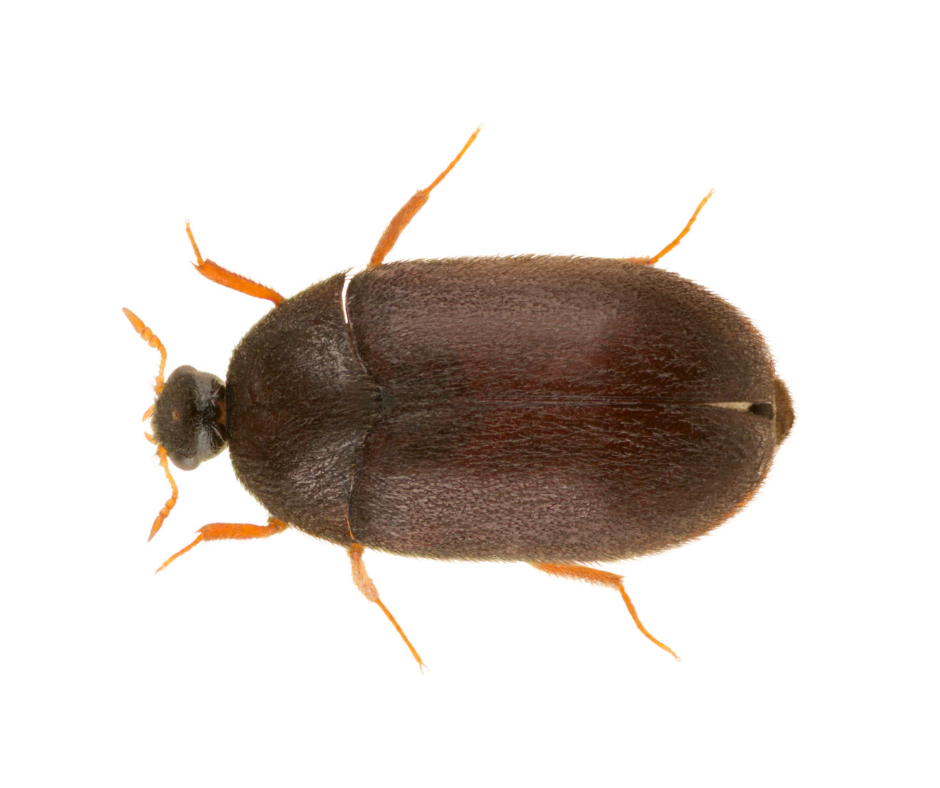
Image Credit: activepestcontrol
Carpet beetles might look a bit like bed bugs at first glance, but their bodies are a different shape, their antennae are shorter and they have wings. They are also usually darker in color.
These insects feed on organic matter like plants, but their larvae are a problem since they like to eat all kinds of natural and semi-natural fabric. However, they don’t bite humans.
7. Booklice
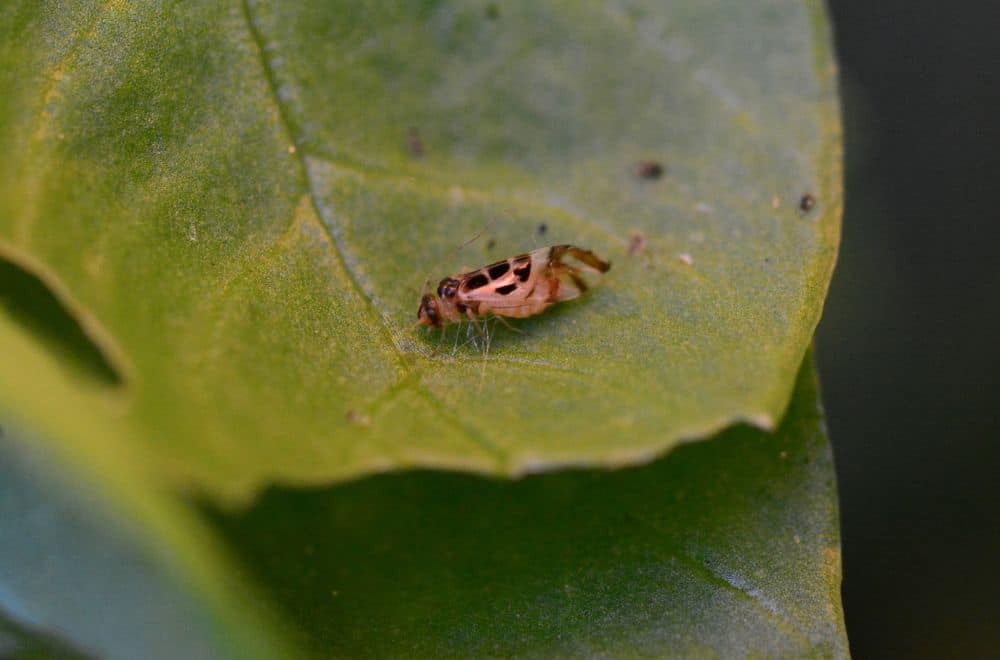
Booklice are hard to mistake for bed bugs if you know what bed bugs look like because, although they are about the same size, they look more like ants, with a longer, thinner body shape.
Booklice don’t bite people, but if you have an infestation, they can eat things like the glue in the spines of old books, which is where the name comes from.
What can I do if I have bed bugs?
Exterminating bed bugs can be notoriously difficult and will include vacuuming your room, cleaning your bed linen and washing your clothes.
However, sometimes it can be necessary to call in an exterminator who will use techniques such as steam treatment, blasting freezing cold air or using pesticides.
It can take at least several weeks to exterminate bed bugs, and they won’t go away on their own since they can survive for up to a year without feeding when necessary.
FAQs
Are bed bugs dangerous?
No, although bed bugs are a major irritation – and are also pretty gross to share your bed with – they can’t transmit diseases when they bite you.
Are any of the other bugs dangerous?
Of the bugs on our list, the only one that poses a major danger to human health is ticks since they are a vector for things like Lyme disease. However, bugs like cockroaches are unhygienic and can transmit disease by passing on bacteria.
Bed bugs – or something else?
As we’ve seen, tiny red bugs in your bed could well be bed bugs – but they could also be something else.
The first thing you need to do is identify which species you are seeing – and then you determine what action, if any, you need to take.
